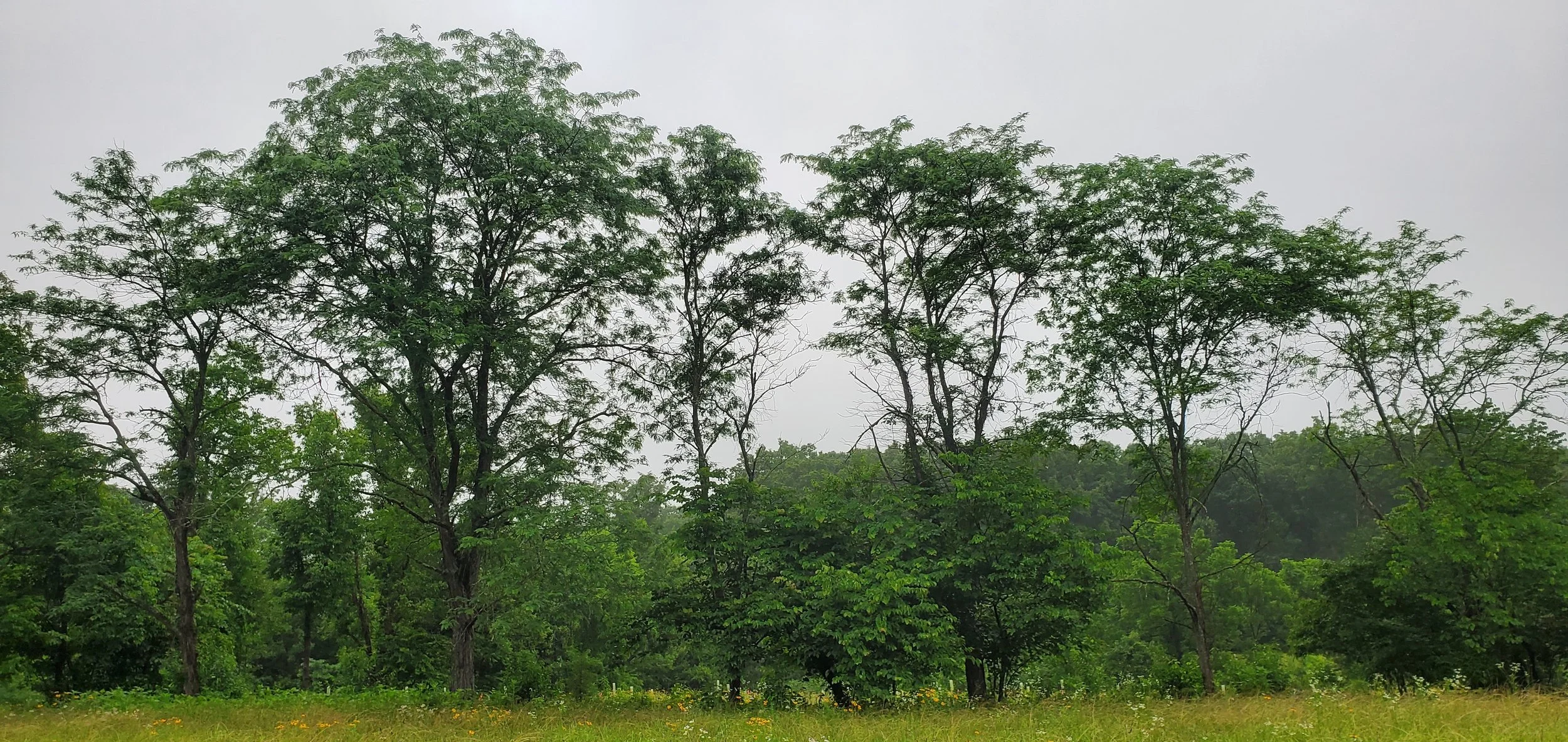 Image 1 of 3
Image 1 of 3

 Image 2 of 3
Image 2 of 3

 Image 3 of 3
Image 3 of 3




Improved Honey Locust Seedlings
These are seedlings grown from open-pollinated cultivar honey locusts such as from the parent trees Millwood and Calhoun, which John Hershey introduced though the Tennessee Valley Authority during the 1930s.
Millwood is a genetically thornless cultivar producing heavy biennial crops of pods at 32% sugar by weight. Calhoun is more of an annual bearing tree, producing variable crops of pods at 36-40% sugar by weight. The original Calhoun tree had thorns.
Thorniness in honey locusts may be ranked on a scale from 1-10, 1 being entirely thornless and 10 being horribly thorned. All thorny seedlings get culled and yours will arrive to you thornless (unless of course you WANT thorns, then you should request those especially). But trees that are mildly thorny may not produce any thorns for a few years, so unfortunately there is not yet a way to completely control for thorniness without a few generations of breeding to arrive at a population of thornless AND fleshy-podded trees. That’s in the works. But for now, as a general rule of thumb, Millwood seedlings are more likely to be thornless trees than Calhoun seedlings. So if this is a big issue for you, select seedlings of Millwood.
Honey locust is ideal for silvopasture plantings as a winter forage. This tree species also has major potential for humans as an alternative sugar crop. The fleshy pods, after ripening their sugar to a golden-amber color, may be dried and then ground into a carob-like powder useful for baking, confections, or as a cutting agent for chocolate or corn meal. Raw, the pods taste rather like spicy apple cider, or melon.
Bareroot seedlings, 12-24” tall.
These are seedlings grown from open-pollinated cultivar honey locusts such as from the parent trees Millwood and Calhoun, which John Hershey introduced though the Tennessee Valley Authority during the 1930s.
Millwood is a genetically thornless cultivar producing heavy biennial crops of pods at 32% sugar by weight. Calhoun is more of an annual bearing tree, producing variable crops of pods at 36-40% sugar by weight. The original Calhoun tree had thorns.
Thorniness in honey locusts may be ranked on a scale from 1-10, 1 being entirely thornless and 10 being horribly thorned. All thorny seedlings get culled and yours will arrive to you thornless (unless of course you WANT thorns, then you should request those especially). But trees that are mildly thorny may not produce any thorns for a few years, so unfortunately there is not yet a way to completely control for thorniness without a few generations of breeding to arrive at a population of thornless AND fleshy-podded trees. That’s in the works. But for now, as a general rule of thumb, Millwood seedlings are more likely to be thornless trees than Calhoun seedlings. So if this is a big issue for you, select seedlings of Millwood.
Honey locust is ideal for silvopasture plantings as a winter forage. This tree species also has major potential for humans as an alternative sugar crop. The fleshy pods, after ripening their sugar to a golden-amber color, may be dried and then ground into a carob-like powder useful for baking, confections, or as a cutting agent for chocolate or corn meal. Raw, the pods taste rather like spicy apple cider, or melon.
Bareroot seedlings, 12-24” tall.